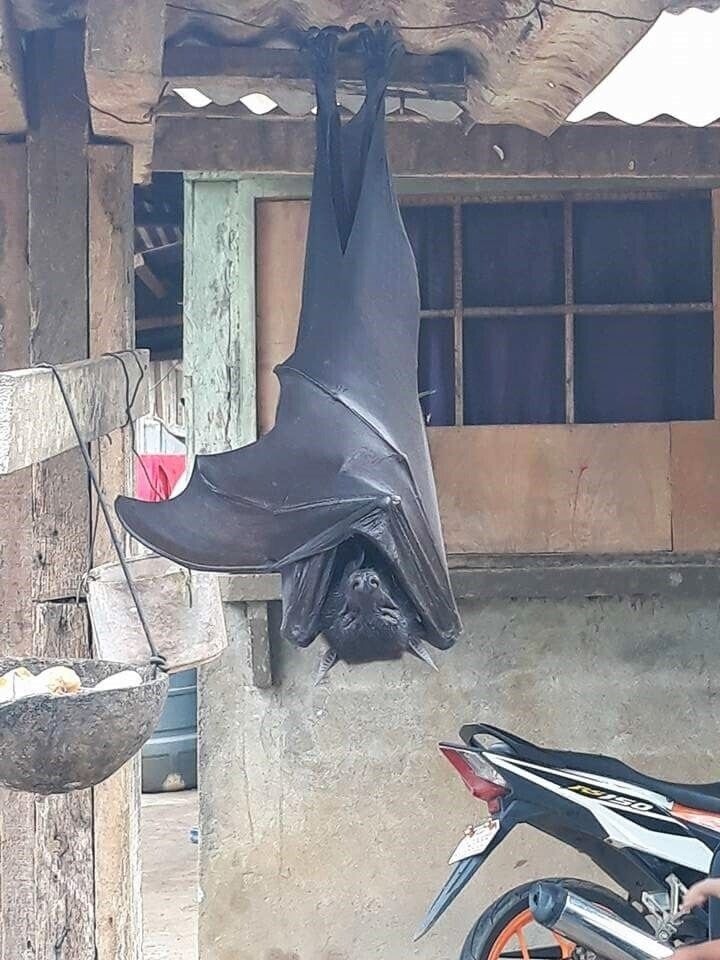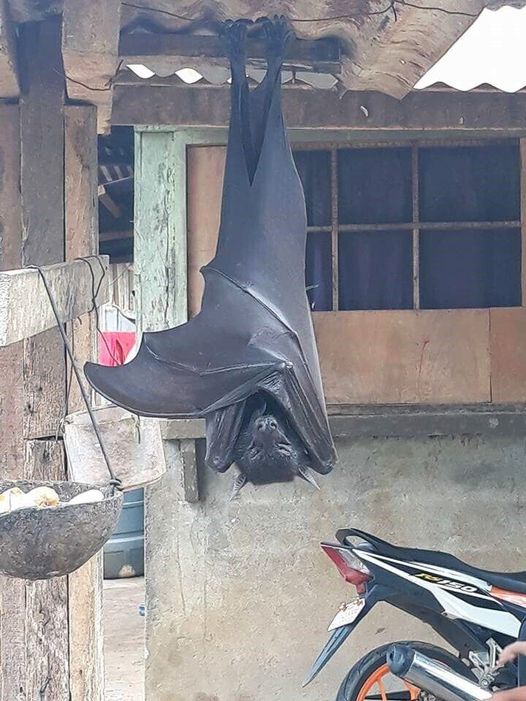
Golden-crowned bats, with their impressive wingspan and striking appearance, may initially seem intimidating. However, these delicate creatures are actually just trying to survive in the face of deforestation and hunting.
These incredible fruit-eating megabats are native to the Philippines and pose no threat to humans. Unfortunately, they have become endangered due to human encroachment on their habitat and illegal hunting.
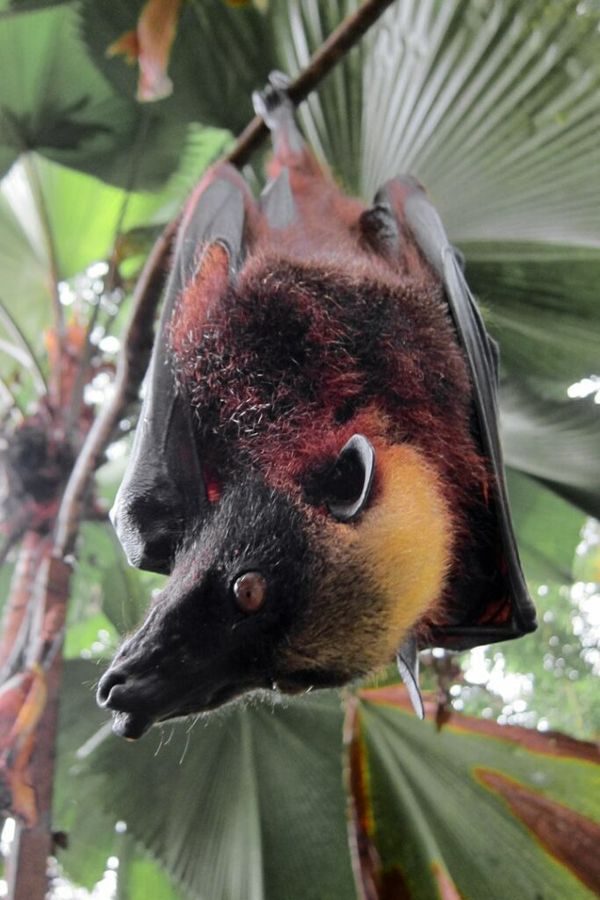
When viral photographs of golden-crowned bats emerged, they were wrongly labeled as “human-sized.” This caused confusion and panic among people. Let’s set the record straight – these bats are only as big as a small child, not an average adult human.
With a wingspan of approximately 5-foot-6 and a body length ranging from seven to 11.4 inches, weighing less than 3 pounds, the golden-crowned bat is indeed one of the largest bat species in the world.
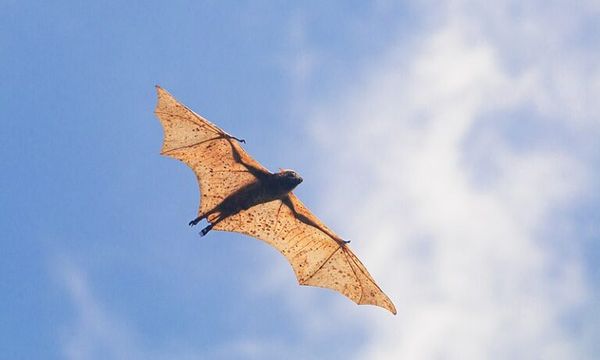
These impressive bats are nocturnal herbivores, feeding on roots, fruits, and vegetables under the cover of night. What sets them apart is the fluffy golden crown adorning their heads, adding a touch of charm to their appearance.
While there are other varieties of flying fox megabats in Asia, Africa, and Australia, the golden-crowned flying fox (Acerodon jubatus) can only be found in the Philippines. These bats often form large colonies in the Philippine jungles, sometimes reaching up to 10,000 members.
Giant Golden-crowned Flying Foxes have developed keen sight and scent to navigate through the air, rather than relying on echolocation like many other bat species. They also play a crucial role in reforestation by spreading fig seeds throughout the Philippines.
However, the more these bats work towards their natural responsibilities, the more destruction humans cause. Sadly, over 90% of old-growth forests in the Philippines have been lost, leading to the disappearance of these bats from many of their former roosting locations on various islands.
According to Bat Conservation International (BCI), the golden-crowned bat population has rapidly declined by 50% since 1986, primarily due to the destruction of their natural habitat and hunting for recreation, commerce, and even personal consumption. This has led to their classification as an endangered species by the International Union for Conservation of Nature (IUCN).
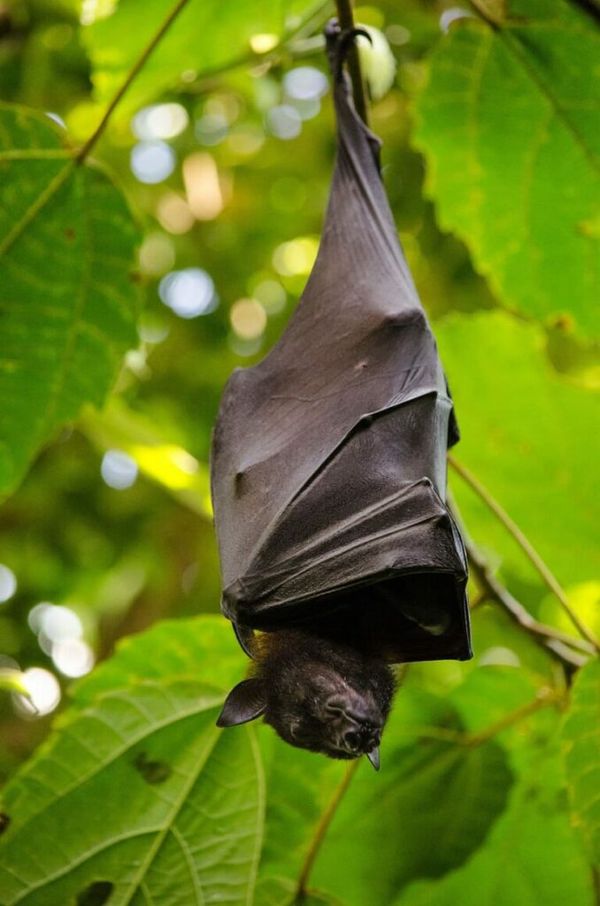
Despite legal protection under the Philippine Wildlife Resources Conservation and Protection Act of 2001, the enforcement of this law remains lacking. Even in protected zones, these bats face mass killings when hunters shoot them while they sleep. This ruthless activity leaves many injured bats clinging to branches, unable to escape.
However, flying foxes do not fear humans. They can be found in forests near cities or towns, perched on utility poles, or even in inhabited areas where they feel comfortable. These intelligent bats have the ability to distinguish between safe and unsafe environments, choosing to move and roost in inaccessible areas, often at altitudes surpassing 1,000 feet.
Studies have revealed that these bats are not only incredible learners but also possess remarkable memory capabilities, comparable to the intelligence of dogs. In an experiment on operant conditioning, flying fox bats raised by humans quickly learned to pull levers in exchange for juice rewards. Furthermore, when returning to the experimental chamber years later, they immediately removed the levers, knowing they would no longer be rewarded.
Golden-crowned flying foxes may have a physical appearance that some find unsettling or terrifying. Their enlarged eyes, pointed teeth, and leathery wings can evoke feelings of fear or unease. However, it’s crucial to remember that out of the 1,300 species of bats, only three are known to consume human blood. If we embrace their unique charm, we might just find these golden-crowned bats to be quite endearing!
It is disheartening to witness the slaughter of these innocent creatures and the destruction of their habitat due to deforestation. Let’s join hands in spreading the word about these gentle bats and work together to protect this endangered species. Together, we can make a significant difference!
